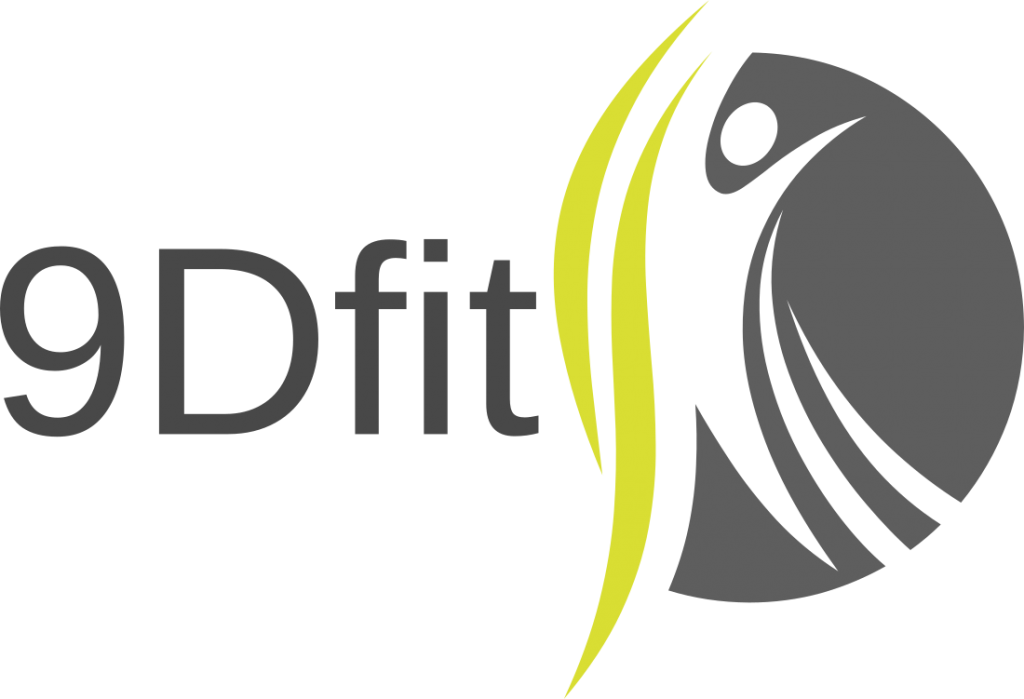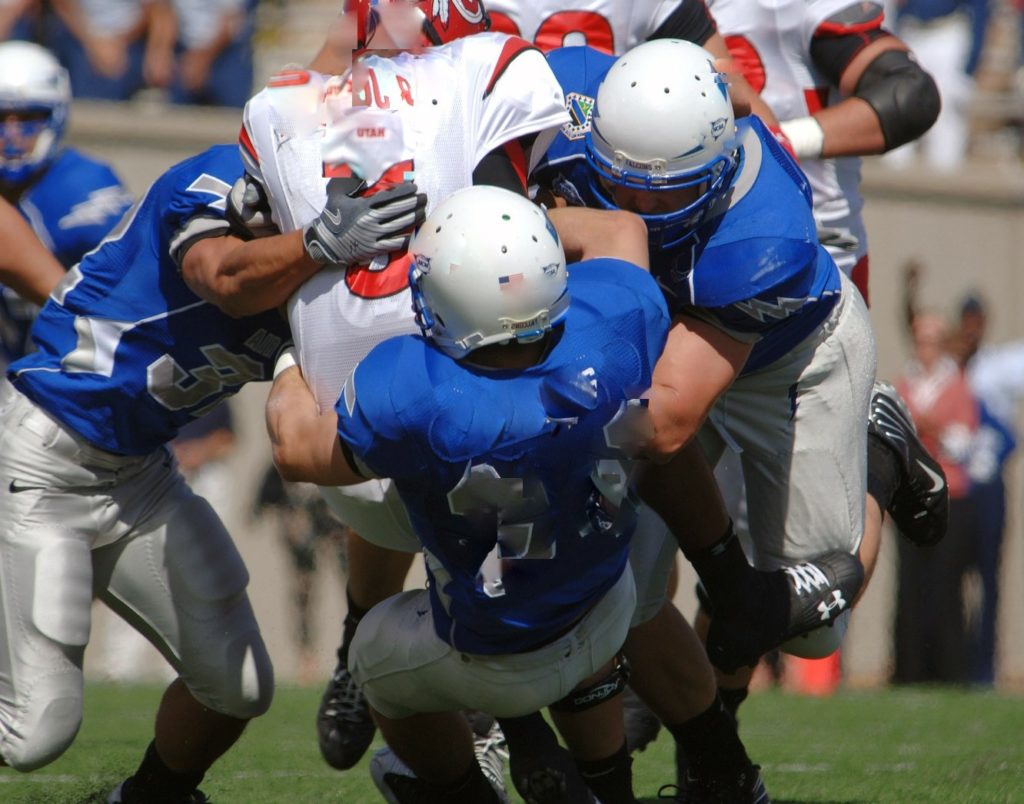By Jason Shea M.S., CSCS., TSAC, PICP IV
Do any of these sound familiar?
“I just have to get him to be more aggressive out on the field”
“She needs to be more assertive and not let those other players push her around”
“He’s too timid out there….I need him to be more aggressive”
What do these parents and coaches mean when say “more aggressive“?
According to an early study out of the Journal of Sport Psychology (17) there are two types of aggression in sport: “rule violating behavior (RVB)”/hostile aggression and instrumental aggression (17). In her paper on hockey players, Amanda Visek sums it up by stating “instrumental aggression is characterized as intentional behavior performed as a means to an end, such as a game-winning goal. Consequently, hostile aggression is performed solely for the purpose of harming an opponent and serves as an end in itself. It has been posited that athletes participating in full-contact sports may view instrumental aggression as natural game behavior and hostile aggression as a more appropriate means to winning (20)”
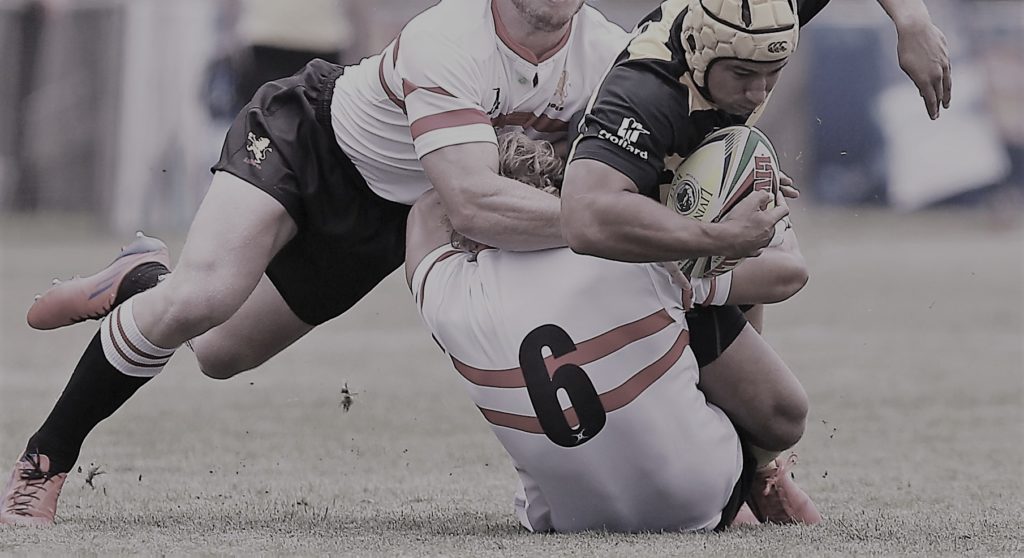
How does aggression facilitate performance in sport? According to sports psychologist Dr. Jim Taylor, “think of aggressiveness as a mindset in which athletes are proactive, assertive, and forceful, for example, driving hard to the hoop in basketball, going for a risky shot in golf or tennis, or setting a fast pace in a marathon (18).”
What is the importance of aggression in sports? Taylor explains, “this aggressive mindset is often needed for athletes to shift from solid performance to exceptional performance because it allows them to take their performances to the next level, particularly for those who aren’t naturally aggressive in how they perform(18).”
For the sake of this post, we are referring to the instrumental, controlled form or assertive aggression in sport. When one thinks of aggression in sport examples, there are many that come to mind. Here are a few:
The moment was the 92′ playoffs. Game seven, Bulls vs Knicks. In the first quarter, after a Scottie Pippen block, Xavier McDaniel, (No. 12 on Bleacher Report’s 2011 list of The Most Badass Enforcers In Sports) got into some shoving with the Bulls. Jordan stepped in and according to John Kass’s Chicago Tribune 2009 article titled “Jordan showed his best in 1 key standoff”
“The moment came with just under three minutes left in the first quarter. Pippen blocked McDaniel’s shot, there was some pushing and shoving, and then Jordan intervened. He put his forehead against the X-Man’s skull, the two of them pushing, skull on skull for a few seconds, before the referees broke it up. Each man received a technical foul.
That’s when Jordan stared into the X-Man’s eyes and said what was on his mind.
It wasn’t about marketing, although Jordan was a slick marketer. It wasn’t about false modesty or talking about getting others involved in the offense or any of the other pretty things he’d tell reporters after games, playing the role of team leader and star. This was the man on the court, refusing to give in, standing there, locking eyes with an opponent he was about to destroy.
“[Bleep] you, baby,” Jordan told X-Man. “[Bleep] you.”
Albert said “both teams are going at each other! Michael Jordan and Xavier McDaniel having words …” Words weren’t the important thing. It was how they were said. The Bulls went on to destroy the Knicks in Game 7, and then won their second of six NBA championships.(8)” Check out the video here.
Have you ever heart of Cary Kolat? Quite possibly the greatest high school wrestler of all time, Kolat went on to wrestle at Penn State and Lock Haven University where he won two national championships. He was three-time World Cup gold medalist and wrestled for team USA in the 2000 Olympics. He has coached at several top level college programs including Lock Haven, Lehigh, Wisconsin, West Virginia, North Carolina, and most recently the U.S. Naval Academy.
Going back to his high school career, he was known for his condition, tenacity, fundamentals, and aggressiveness. Sports Illustrated even wrote an article about him titled THE BEST THERE EVER WAS. This combination led him to a 137-0 undefeated high school career that included 4 Pennsylvania State Championships. Check out this video of him against another highly successful Pennsylvania wrestler.
For more inspiration, another great video to check out is this one, highlighting his dominance at the Cadet Nationals tournament.
Nolan Ryan’s Performances after Fight with Robin Ventura
and
Being Hit in the Face By A Bo Jackson Line Drive
5,714 strikeouts, 7 no-hitters, 12 career 1-hitters, 18 career 2-hitters, career .204 batting average against, and a career that lasted 27 years! Growing up in Alvin Texas, Ryan helped his dad deliver newspapers in the early morning hours before school. 1,500 of them. According to the Society for American Baseball Research “between the ages of 8 and 18, Nolan spent every morning between 1 and 4 a.m. with his father delivering the Houston Post to homes in the Alvin area (his father was the distributor for the paper in town). Nolan rolled the newspapers into tight cylinders and delivered them to residents long before the sun rose. The paper route instilled a sense of personal responsibility and maturity that would lead to his becoming a team leader in high school and a professional ballplayer immediately thereafter. It also didn’t hurt his arm. Nolan Ryan’s ability to throw hard and throw often was a gift, but one honed by a strong work ethic both in the quiet predawn hours in Alvin and before the dropped jaws of midday onlookers on the playing fields in town (3).”
During his career, there were many moments that defined his legendary toughness. Let’s look back at two of our most memorable ones.
When he was 46 years old, while pitching for the Texas Rangers, Nolan Ryan got into a fight with 26-year old Robin Ventura. According to Eric Chersterton’s 2018 MLB.com article Why did Robin Ventura challenge Nolan Ryan to one of the most memorable brawls in history? “on Aug. 4, 1993 — the final season of Ryan’s career — the righty toed the rubber for a start against the White Sox. After Chicago third baseman Robin Ventura hit an RBI single in the first inning on a fastball over the plate, the 46-year-old Ryan was determined to not give him something that good to hit again. So, when Ventura came around again in the third inning, Ryan worked inside and ended up hitting him in the shoulder.
After taking a couple steps toward first base, Ventura decided to charge the mound. Almost immediately, it was quite apparent that he would regret that decision (5)”
Nolan Ryan not only put Ventura in a headlock and reigned down punches to the head, but he also went on to retire 12 of the next 13 batters, strike out 5, and earn the win for Texas.
The other moment was when Nolan Ryan was hit in the face by a Bo Jackson line drive back to the mound. According to a 2021 Fanbuzz.com article, “the Texas Rangers were facing the Kansas City Royals on September 8, 1990, in Arlington Stadium. On the mound for the Rangers was the 43-year-old Ryan, the man who’s hair was beginning to disappear from the top of his head. Ryan threw his sixth no-hitter that season, and the following one he twirled his seventh and final no-hitter at age 44, which is still one of the most remarkable feats in baseball history.
The Royals, meanwhile, boasted a heart-of-the-order consisting of Hall-of-Famer George Brett in the three-hole and Bo Jackson in the cleanup spot. As one might recall, Jackson was the fastest, strongest player maybe baseball has ever seen. The former Auburn running back and Heisman Trophy winner tore the covers off baseballs, pummeled 28 home runs that season and broke bats over his head like it was nothing.
Ryan and Jackson faced each other in the top of the second inning. On the first pitch he saw, Jackson chopped a hard ground ball back at Ryan’s face. The ball trickled away but Ryan was able to pick it up and fire a missile over to first to nab the speedy Jackson for the out.
Then, blood. Lots of blood. When Ryan returned to the mound, his face and jersey were covered in his own blood. He licked his bloody lip because, well, that’s just who Nolan Ryan was.
As fans soon found out, “The Ryan Express” didn’t stop until it reached its destination. Ryan wasn’t coming out of the game, and he made damn sure of that. Nolan Ryan walked two batters after the Bo Jackson liner, but he finished the second inning following a pop-out and a fly-out. MLB’s all-time strikeout leader went seven strong innings, striking out eight and surrendering just one run before reliever Kenny Rogers took over for him in the eighth. The Rangers won the game on Rafael Palmeiro’s walk-off RBI double in the bottom of the ninth, and they might not have done so without Ryan’s effort (13).”
Nicknamed “sweetness”, Walter Payton’s running style was anything but that. At 5’10”, 200 lbs, Payton was nowhere near the size of many of the most dominant, physical power runners in NFL history (Earl Campbell 5’11” 232 lbs, Jim Brown 6’2″ 232 lbs, Christian Okoye 6’1″ 265 lbs, Jerome Bettis 5’11” 255 lbs, Bo Jackson 6’1″ 227 lbs, Derrick Henry 6’3″ 250 lbs, Mike Alstott 6’1″ 248 lbs (okay he was a fullback..but he ran like a tailback) and more). Known for his punishing running style and durability (started in more than 180 consecutive games in his career), at the time of his retirement he set NFL records for total career rushing yards, single game rushing yards (275 yards), most 100 yard games (77), rushing touchdowns, and more.
Growing up he didn’t start playing football in high school until his junior year. He was the drummer in the school marching band, while also running track and singing in the school choir. Once he started playing football, the sky was the limit. He quickly became one of Mississippi’s best high school running backs. Throughout the remainder of his high school career he also excelled in basketball and track and field, played baseball, and still found time to maintain his position as drummer in the school marching band.
Overlooked by most SEC colleges, he went on to play football at Jackson State University (yes…that same Jackson State where Deion Sanders is now making a big impact as head coach). After graduating with a degree in communications he was drafted 4th overall by the Chicago Bears. Here is a great video highlighting just how dominant he was. (Be sure to watch for when he even “bumps” into a few teammates during one of his punt returns.)
Is An Aggressive mindset Trainable?
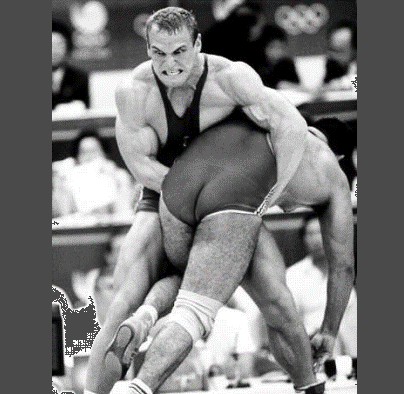
How can an athlete be more aggressive? As an athlete you may ask yourself “how do I become more aggressive mentally? Perhaps not quite to the level of the above examples, but according to Dr. Jim Taylor’s 2014 Psychology Today article “An aggressive mindset can be developed in several ways. First, you’re more likely to perform aggressively if your body is amped up a bit more than usual. You can raise your physical intensity with more movement during practice, in your pre-competitive routines, and just before you begin to compete. Simply moving more and being more dynamic in your movements will help you shift to a more aggressive mindset.
Second, you can use high-energy self-talk to instill that aggressive mindset. You can see this practice used regularly in football locker rooms and before weightlifting competitions. Examples include: “Let’s go! Attack! Charge! Bring it!” What you notice is not only what you say, but how you say it. So, your aggressive self-talk should sound, well, aggressive. No pussy cats here; only tigers, lions, and panthers allowed.
Third, you can incorporate an aggressive mindset into mental imagery in which you see and feel yourself competing aggressively which, in turn, helps create more attacking thinking, focus, and feeling (18).”
Training Intent
How do you build aggressiveness? Former international speaker and world-renowned strength coach Charles Poliquin has stated “It is the brain’s intent that determines the training effect, not the actual velocity of the bar.” “In other words, “concentrating on acceleration” while reaching muscle failure will bring about the same adaptations as will lifting at high speed, as long as you concentrate on accelerating the load (15).“

As an athlete do you want more horsepower in your motor? Are you just “going through the motions” or are you attacking each exercise, set, sprint, etc?
Side Note: After his 2nd round knockout of Trevor Berbick in their 1986 WBC Heavyweight Championship fight, Mike Tyson summed up his fighting intent when he was quoted saying “every punch I threw with bad intentions to a vital area…I aimed for his ear…I wanted to bust his eardrum…Every punch had bad intentions.”
In other words, is the training effect of a 10-20 second, maximal effort/intensity sprint on a fan bike the same as a 30-60 second moderate effort/intensity interval on the bike? Is the training effect of a 10-rep, all out effort/intensity per-rep set of sledgehammer tire hits the same as a 30-60 second continuous set of tire hits? Is the training effect of a set of five 5-second eccentric/3-second pause-at-the-bottom explosive pushups the same as a set of 30-50 regular pushups?
When it comes to training intent (and effect) look at the physiques of Olympic sprinters and short distance hurdlers and compare those to the physiques of Olympic triathletes and marathon runners.
Research on Training Intent
A study out of the European Journal of Applied Physiology (4) looked at the effect intent had on maximal power and strength. One group of subjects did sets of 8-10 reps as fast as possible while another group did sets of 8-10 reps at 2-3 seconds per rep. After 10 weeks the group moving the weight as fast as possible saw significantly greater improvements (50% vs 3%) in curl strength, bench press (37% vs 13%), leg press (31% vs 8%), and 30s chair stand (43% vs 6%) (4).

A 2001 study comparing fast vs slow, controlled contraction speeds had similar findings. The group performing the fast contractions saw significantly greater increases in higher threshold muscle fibers and both concentric and eccentric strength (12).
In a 2017 study from Life Sciences, researchers looked at the differences between working out with High Mental Effort (HME) vs Low Mental Effort (LME). After six weeks of training, the high mental effort group had significantly greater increases in strength (20.47%), while the low mental effort group had minimal, if any gains in strength (7).
The researchers stated that “since the only difference in the training programs for the two groups was the level of effort involved during the low-intensity physical exercise, it is reasonably to suggest that human muscle strength gain following a relatively short training program (e.g., 6 weeks in this study) depends primarily on the level of effort involved in the training, not muscle exercise intensity per se. The data suggest that the level of effort involved in generating a relatively low-level motor activity during training plays a critical role in determining strength gains. This explains repeated observations in recent years that human upper and lower limb muscles can be significantly strengthened even without noticeable muscle exercise as long as a strong intent or effort is involved in the envisioned muscle action during training (7).”
The researchers went on to explain that “the HME task involves internal imagery or strong intent to move that activates higher order cortical areas that strengthen or enhance the neural circuitry that controls the descending pathway projecting to and driving the trained muscle (7).
Intense Wood Chopping and Testosterone Levels

A 2013 study on horticultural tribesman in Bolivia measured testosterone levels before and after an hour of intense wood chopping. The researchers found that testosterone levels had increased an average of 48% after one hour of intense wood chopping. They concluded that “when engaged in heavy physical activity, testosterone increases, allowing for the rapid muscular performance enhancement (19).”
Looking at this study, was it the intensity of the wood chopping that spiked testosterone? Or was it the act of hitting something? Was it the functional movements associated with intense manual labor?
Boston Irish Wolfhounds Rugby Story
Back in 07, 08, and 09, we had the honor of working with the Boston Irish Wolfhounds Rugby team. Those teams were big, strong, fast, tough, and aggressive. Their first side ended up going out to Colorado to compete in the National Championship Final Four one of those years.

During one of the off-season workouts, the team was doing tire flips. At the time we had several tires, including a 900lb tire, a 700lb tire, and a 500lb tire. On the 500lb tire was the team’s 2nd side flanker, who also happened to be the teams oldest player. At a bodyweight of under 200lbs he was manhandling the tire. To make this story even more impressive, when I asked him how old he was, he told me 58 years old!
“What?” I said. “58 and you are still playing Rugby. Never mind second side for one of the best teams in the country.”
Dumbfounded, I had to ask him why he was still playing Rugby at 59 years old. I will never forget this. He told me that throughout his years, he learned that he needed to hit things in order to maintain his testosterone levels.
That man’s name was Steve Durant. Steve was the head of sports psychology at one of the major hospitals in Boston. Along with that role he also worked as a Sports Psychologist with the Boston Red Sox and currently the Boston Bruins. He intuitively knew about hitting something and the impact it had on his testosterone levels. To read more about “Doc” Durant, check out this excellent Rugby Republic article about him and his approach to mindfulness training for athletes.
Thus far we have talked about chopping wood, Charles Poliquin, hitting things, intent, Irish Wolfhounds, and instrumental aggression. Here are 9 useful “controlled aggression/intent” physical training applications:
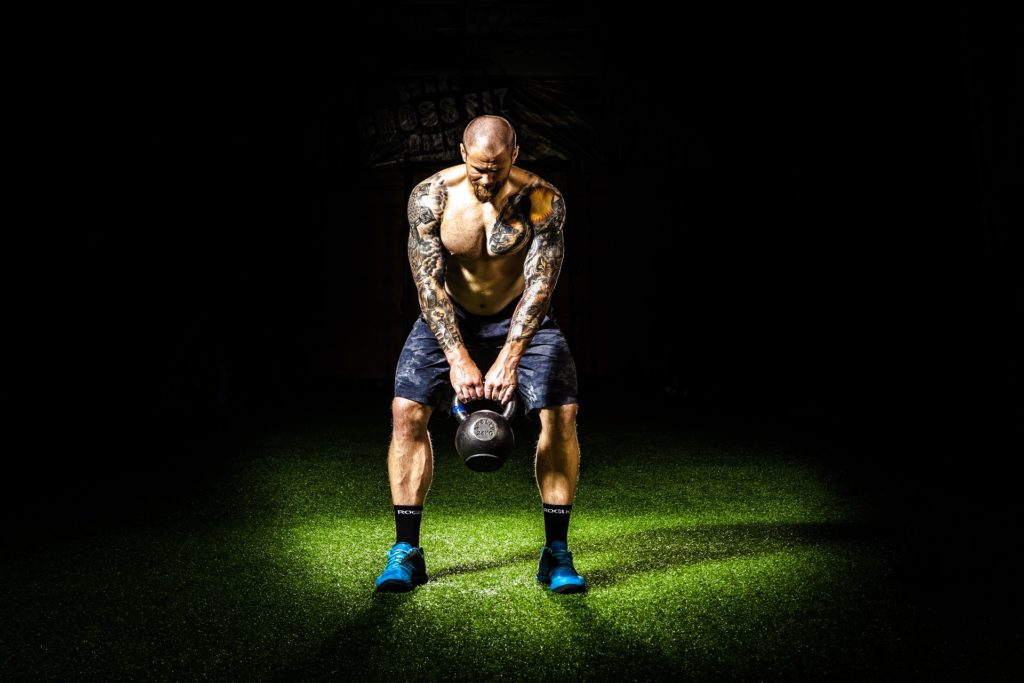
- Overhead Kettlebell Throws (Viking Toss): Similar motion to the concentric movement of a kettlebell swing, with the athlete throwing the kettlebell as high and far overhead as possible. Check out this video of the world’s strongest men throwing 44 – 66lb kettlebells over a 15 foot mark. Be sure to practice proper safety for yourself and those around you when attempting these. If you have access to a beach, sandpit, or long jump pit, these are good ways to avoid putting divots in your lawn or on your field.
- Sledgehammer Tire Hits: To steal from the Mike Tyson quote above: hitting the tire with “bad intentions” on every repetition. Start with 6-10 total repetitions, alternating sides every rep. For a greater range of motion use a small/low tire or smash the hammer into the sand. To prevent uncontrollable bounce-back when hitting a tire, try using the flat side of the sledge.
- Landmine grappler/wrestler twist variations: Rather than get to fancy here (you can probably find hundreds of landmine exercise variations online), let’s just get down to pure old aggression training with this. Start with a manageable weight (see below) at one hip. Rotate/swing the bar up and out as powerfully/aggressively as you can, pivoting both feet, until the bar reaches the other hip. Immediately change direction. For a challenge try for either 10 reps in 10 seconds or 20 reps in 30 seconds. If you hit the reps/time, add 10lbs. Keep at it until you can no longer hit the reps in allotted time.
- Functional Isometronics: Popularized by Charles Poliquin, Isometronics are the combination of heavy partial repetitions with functional isometrics. According to a 1996 article by Charles, “these workouts make use of what exercise physiologists call “functional isometric contractions.” In the early ‘60’s, this method was known in the Iron Game as “isometronics,” which is a contraction of the terms isometrics and isotonics (or, more properly, auxotonics). The theory behind this workout system was that although isometrics can be a valuable adjunct to training, it lacks the dynamic component of regular lifting, known as isotonics. With isometronics, you take advantage of the joint angle specificity of strength gains caused by isometric training. Thus, during every set performed in the power rack, you’ll perform a functional isometric contraction afterpre-fatiguing the muscle with heavy partial repetitions (14).
In his week long Hypertrophy boot camp, Poliquin used to teach the bench press variation of functional isometronics as one of the AM torso workouts. Here the trainee would do 3 sets each of low range, mid range, and top range isometronic bench press for a total of 9 sets. For each range you’ll need to set up pins at the top and bottom ranges of the motion.
Perform 4 to six partial reps, aggressively driving each rep into the top pin. On the last rep, push the bar into the pins, with the intent of driving it through the pins for 6-9 seconds. After performing 3 sets at the bottom range, move onto the mid range for 3 sets, and finally the top range for 3 sets.
5. Modified Strongman Training: From the article The Importance Of Low Back Strength In Wrestling Part 3: How To Improve Functional Strength “Modified strongman training can be a very effective tool in building functional strength in wrestlers (and most other athletes). Modified strongman training can increase low back strength, upright stability, grip strength, lactate tolerance, connective tissue integrity, while improving mental toughness and resilience.
No longer a training method typically reserved for 300+ pound strength athletes, modified versions of strongman exercises have become a mainstream training method. Commercial health clubs have added variations of strongman training including sandbags, farmer carry handles, battle ropes, sled drags, and hand over hand rope pulls. Cross training centers now have an array of tires, slosh sticks, kegs, atlas stones, sleds, and more.
A 2007 study out of the Journal of Strength and Conditioning Research found an average blood lactate of 15.6 mmol/L (peak of 16.1 mmol/L) when pushing or pulling a motor vehicle 400 meters (2). The blood lactate levels were 131% greater than those found in maximal treadmill running (2).

In a 2014 study, researchers had subjects perform a sled drag workout that consisted of 5 sets of two 20-m sled drags (30 seconds between drags per set) with 120 seconds of rest between sets. The sleds were loaded with 75% of each subjects body mass and were dragged across an indoor running surface. The researchers found blood lactate levels peaked at 12.4 mmol/L after the drags (21).
Research done on tire flips found blood lactate levels of just over 10 mmol/L after subjects performed 2 sets of 6 tire flips with a 232kg tire. The subjects were given 3 minutes of rest between each set (9)
Variations of Strongman training have been adopted by Law Enforcement as well. At many police academies, recruits can be seen performing exercises such as dummy drags and hand over hand rope pull variations as a part of their training curriculum. Navy SEALS have been known to carry and drag telephone poles in BUDS training, while SWCC operators have made great use of Hauser lines.
SWAT teams compete against other regional SWAT teams in yearly competitions. The teams are required to complete an obstacle course, typically a few miles in duration, in which tactical skills and physical abilities are meshed into one team workout. The tactical skill set revolves around tasks associated with their work, while the physical abilities is a combination of endurance and modified strongman exercises. From tire flips and atlas stone carries, to lifting and hoisting awkward implements, these tests are truly a measure of physical and mental capacity.
A study by McGill et al found strongman training to be a highly effective training tool for increasing upright stability. The researcher team stated that “each event challenges the body linkage and the stabilizing system in a different way so that the weak link will be found (10)”. They concluded that the carrying events “would enhance traditional lifting-based strength programs (11).”
Who would you rather have standing across from you on the wrestling mat, former World’s strongest man Hafþór Björnsson or the current world record holder in plank hold?
Conventional strength exercises including squats and deadlifts at 80% of one’s 1 rep max have been found to have significantly greater muscle activation of the core compared to horizontal isometric core targeted exercises (6). Other studies have shown that walking with a load further increased rectus abdominis activation by 132%, when compared to standing (1). All the more reason to include strongman protocols into your training regimen.”
6. Moving heavy weight with the intent to move the bar fast: As Charles Poliquin stated “It is the brain’s intent that determines the training effect, not the actual velocity of the bar.” “In other words, “concentrating on acceleration” while reaching muscle failure will bring about the same adaptations as will lifting at high speed, as long as you concentrate on accelerating the load (15).”
7. Heavy Bag Work: Once again, to borrow from Mike Tyson; hitting the bag with “bad intentions”. Short duration sets, longer rest periods, keeping your punches tights, and protecting your wrists and shoulders. Think of “Doc” Durant’s comment about hitting things and spiking testosterone.

8. Explosive Pushups: 5 second eccentric, 3 second pause at the bottom, and explode/jump to a controlled landing. These can be performed in an autoregulated fashion, with sets and reps depending on quality/explosiveness. .
9. High Intensity Fan Bike Sprints: There is really nothing like a 10 or 20 second all out, like your life depends on it, sprint on a fan bike. Especially on a highly durable/heavy duty Rogue Echo bike. The machine allows you to push as hard as you possibly can, taxing what feels like your entire muscular system. For an entire article dedicated to the brain and body benefits, along with several high intensity workouts, check out the article 9 Awesome Benefits of the Fan Bike (2021).
Bonus Tip: Don’t Be a “Molly Putz”. Have you ever heard of the story of U.S. Olympic Gold Medalist Dan Gable and “Molly Putz”. Check out the excerpt from his book here.
Thanks for reading!
References
- Anderson et al. A biomechanical analysis of anterior load carriage. Ergonomics. 50(12); Pp 2104-2117. 2007.
- Berning et al. Metabolic demands of junkyard training: pushing and pulling a motor vehicle. Journal of Strength and Conditioning Research. 21: Pp 853–856. 2007.
- Boston T. Nolan Ryan. The Society for American Baseball Research. 2011.
- Bottaro et al. Effect of high versus low-velocity resistance training on muscular fitness and functional performance in older men. European Journal of Applied Physiology. 99(3); Pp 257-264. 2007.
- Chesterton E. Why did Robin Ventura challenge Nolan Ryan to one of the most memorable brawls in history? MLB.com. 2018.
- Hamlyn et al. Trunk muscle activation during dynamic weight-training exercises and isometric instability activities. Journal of Strength and Conditioning Research. 21(4); Pp 1108-1112. 2007,
- Jiang et al. The Level of Effort, Rather Than Muscle Exercise Intensity, Determines Strength Gain Following A Six-Week Training. Life Sciences. 178: Pp 30–34. 2017.
- Kass J. Jordan showed his best in 1 key standoff. The Chicago Tribune. September 2009.
- Keogh, J. A Brief Description of the Biomechanics and Physiology of a Strongman Event: The Tire Flip. Journal of Strength and Conditioning Research. 24(5); Pp 1223-1228. 2010.
- Kostorz and Sas-Nowosielski. Aggression Dimensions Among Athletes Practising Martial Arts and Combat Sports. Frontiers in Psychology. 2021.
- McGill et al. Comparison of different strongman events: trunk muscle activation and lumbar spine motion, load , and stiffness. Journal of Strength and Conditioning Research. 23(4); Pp 1148-1161. 2009.
- Paddon-Jones et al. Adaptation to chronic eccentric exercise in humans: the influence of contraction velocity. European Journal of Applied Physiology. 85(5); Pp 466-471. 2001.
- Pinak P. Nolan Ryan vs. Bo Jackson: Relive the Epic (and Bloody) At-Bat. Fanbuzz.com. March 2020.
- Poliquin C. Breaking Size and Strength Barriers with Isometronics. Strength Sensei Inc. Original Pub 1996.
- Poliquin C. The Poliquin International Certification Program – Theory 1 Manual. 2007.
- Silva J. Assertive and aggressive behavior in sport: A definitional clarification. Psychology of Motor Behavior and Sport. Champaign Ill. PP 199-208. 1978.
- Silva J. The perceived legitimacy of rule violating behavior in sport. Journal of Sport Psychology. 5; Pp 438-448. 1983.
- Taylor J. 3 Essential Mindsets for Athletic Success. Psychology Today. November 2014.
- Trumble et al. Age-dependent increases in male salivary testosterone during horticultural activity among Tsimane forager-farmers. Evolution and Human Behavior. 34(5); Pp 350-357. 2013.
- Visek A, B.A. Ice Hockey Players’ Perceived Legitimacy of Aggression: An Investigation at the Youth, High School, Collegiate, and Professional Levels. School of Physical Education at West Virginia University.
- West et al. The metabolic, hormonal, biochemical and neuromuscular function responses to a backward sled drag training session. Journal of Strength and Conditioning Research. 28: Pp 265-272. 2014.
